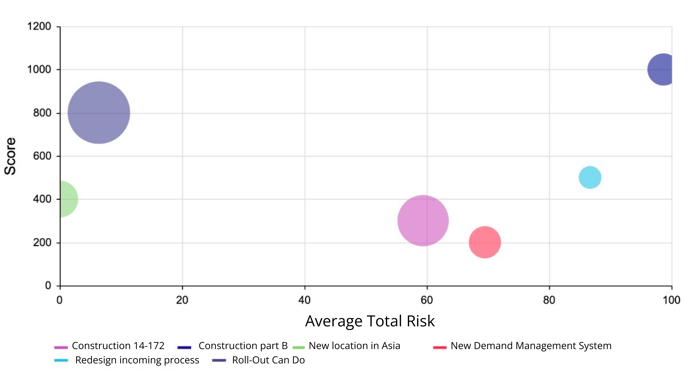A project score is a metric or system of metrics used to evaluate, compare and prioritize projects within an organization.
A project score can be based on various criteria, including but not limited to financial viability, strategic importance, risk level, resource requirements and alignment with organizational goals.
Creating a project score
The creation of a project score typically involves the following steps:
- Determining the evaluation criteria: The first step is to define the criteria on the basis of which the projects are to be evaluated. These criteria vary depending on the company's objectives and priorities. Common criteria are costs, expected benefits, risk, strategic orientation and feasibility.
- Weighting of the criteria: Since not all criteria are equally important, each criterion is assigned a weight that reflects its relative importance. The weighting helps to prioritize the projects more precisely.
- Evaluation of the projects: Each project is evaluated against the established criteria. This can be done by quantitative measurements, such as calculating the return on investment (ROI), or by qualitative assessments, such as estimating the level of risk.
- Calculation of the project score: After all projects have been evaluated, the score of each project is calculated by applying the weighted criteria. This can be a simple sum of the weighted scores or a more complex formula that takes various factors into account.
- Prioritization of the projects: Projects are ranked based on their scores. Projects with higher scores are prioritized as they are considered more valuable or important to the company.
- Review and adjustment: It is important to regularly review and update the evaluation process to ensure that the evaluation criteria and weightings remain relevant and reflect the company's objectives.
A well-designed Project Score provides an objective basis for decision makers to effectively compare and prioritize projects, resulting in more efficient allocation of resources and better strategic alignment.
The Project Score in Can Do represents the benefit of a project. The score can be entered into the Can Do project management tool and represents the expected benefit of the project.
The score is recorded as a numerical value in the demand form, for example.
Company goals can also be defined and stored in Can Do. For each project or project application, it is then possible to define how much the project "contributes" to the respective target. This allows projects to be prioritized.

The evaluation and analysis is then often carried out with so-called bubble charts, which show the score on the Y-axis as in this example (the X-axis is the risk of the project).

The aim of the analysis is to make only the "right" projects. In other words, the projects with the highest benefit (score) and the lowest risk (in this example, the circle at the top left).
